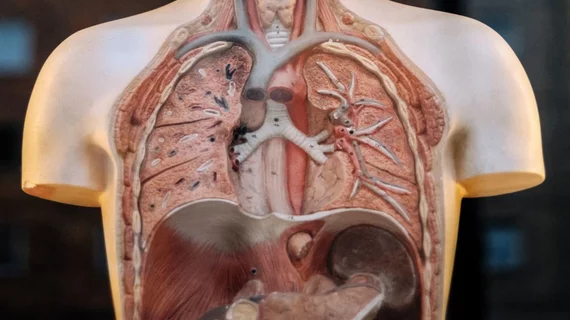Many patients have COVID-19 lung abnormalities at discharge; follow-up imaging may be necessary
An overwhelming majority of patients with COVID-19 had mild to significant lung abnormalities on their chest CT scans when they were discharged from the hospital, according to a new study. Experts believe these groups may need closer follow-up observation.
That was a primary takeaway from a longitudinal analysis of 90 patients with coronavirus-related pneumonia, published March 19 in Radiology. After analyzing hundreds of images, the researchers were able to pinpoint when CT abnormalities peaked and the changes in these patterns over time.
First author Yuhui Wang, with Union Hospital’s radiology department in Wuhan, Hubei, China, and colleagues believes knowledge of these transformations can go a long way in the battle to save lives.
“A better understanding of the progression of CT findings in COVID-19 pneumonia may help facilitate accurate diagnosis and disease stage,” Wang and colleagues wrote. “Thus, we performed a longitudinal study to analyze the serial CT findings in patients with COVID-19 pneumonia for temporal change.”
The group enrolled 33 men and 57 women with a mean age of 45 years in their study. Each was followed from Jan. 16 to Feb. 17 until they were discharged or died. Two radiologists poured over 366 CTs, focusing on lung abnormality patterns and distributions, total CT scores and number of zones involved.
After symptoms set in, lung abnormalities quickly increased and peaked at 6-11 days. Ground-glass opacities were by far the most common findings, with consolidation the next most prevalent. Together, they accounted for about 84% of all CT findings in the early-stage of the virus.
Upon discharge, 94% of patients still had “mild to substantial residual” abnormalities on their final chest CT, and most often those were ground-glass opacities. The authors noted that a recent study found four discharged cases had positive SARS-CoV-2 lab-test results 5-13 days after their release. This, Wang et al. noted, means “follow-up monitoring of patients might still be necessary.”
These findings appear to align with a number of other studies that have reported ground-glass opacities in patients with the new virus. Research published Thursday, March 19, found early and mid-term follow-up CT scans yielded an increase in the extent of ground-glass consolidation and density in two patients.

